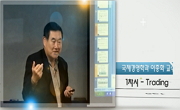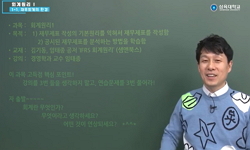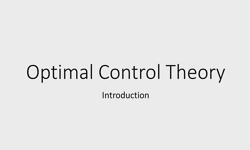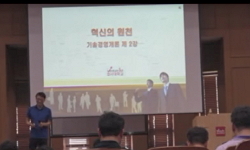본 논문은 주희의 『中庸章句』의 관점을 계승한 퇴계의 『中庸』 해석이 어떠한 특징을 가지는가 하는 점을 규명하고자 한다. 퇴계의 『중용』 해석의 내용과 특징은 『中庸釋疑』를 통하...
http://chineseinput.net/에서 pinyin(병음)방식으로 중국어를 변환할 수 있습니다.
변환된 중국어를 복사하여 사용하시면 됩니다.
- 中文 을 입력하시려면 zhongwen을 입력하시고 space를누르시면됩니다.
- 北京 을 입력하시려면 beijing을 입력하시고 space를 누르시면 됩니다.
https://www.riss.kr/link?id=A45036966
-
저자
엄연석 (한림대 태동고전연구소)
- 발행기관
- 학술지명
- 권호사항
-
발행연도
2005
-
작성언어
Korean
-
주제어
退溪 ; 中庸 ; 中庸釋疑 ; 朴世堂 ; 李瀷 ; 丁若鏞 ; 性·道·敎 ; 費隱 ; 敬 ; 愼獨 ; 理氣論 ; 形而上下 ; 理 ; Toegye ; Chung-yung ; Chung yung seok yi ; Park se-dang ; Lee ik ; Cheng yak-yong ; the nature·the path·the instruction ; the expansive and secret ; reverence ; watchfulness over the alone ; that which belongs to the realm 'above shapes' ; that which belongs to the realm 'within shapes ; theory of principle and material forces ; principle
-
KDC
100.000
-
자료형태
학술저널
-
수록면
161-202(42쪽)
- 제공처
-
0
상세조회 -
0
다운로드
부가정보
국문 초록 (Abstract)
본 논문은 주희의 『中庸章句』의 관점을 계승한 퇴계의 『中庸』 해석이 어떠한 특징을 가지는가 하는 점을 규명하고자 한다. 퇴계의 『중용』 해석의 내용과 특징은 『中庸釋疑』를 통하여 그리고 문인들과 문답한 내용 등을 통하여 살펴볼 수 있다. 퇴계는 대체로 주희의 『중용장구』의 성리학적 해석 관점을 계승하면서도, 자신의 理氣心性論의 시각을 관철하는 입장에서 『중용』을 해석하고 있다. 퇴계는 박세당이나 이익이 道를 구체적 현실에서의 주체적 실천이나 오륜을 실천하는 덕목으로 보는 것과 달리, 性·道·敎가 형이상학적 실체 또는 규범, 그리고 이들 도리를 닦는 것으로 이해하였다. 또한 그는 『중용』에서의 費隱 개념을 형이상의 원리의 세계의 중층적 구조와 실재성을 표현하는 것으로 설명하였다. 또 한편으로 퇴계에서 存養 省察, 戒懼, 謹獨 등을 일관하는 개념으로서 敬은 마음의 본체로서 性과 작용으로서 情을 전제하고 본성으로부터 나오는 감정을 다스림으로써 理를 마음에 확립하고자 하는 데 의미가 있다. 이러한 퇴계의 수양론적 관점은 誠과 愼獨을 상제에 대한 종교적 경외심과 복종의 관점에서 해석하는 정약용의 시각과 크게 대조되는 것이다. 나아가 퇴계는 中和와 中庸을 안과 밖으로 구분하여, 중화가 性情에 유래하여 안으로, 중용은 덕행에서 유래하여 밖이 된다고 보았다. 퇴계가 중화와 중용을 내외로 구분하는 것은 이 두 가지를 형이상과 형이하로 구별하고자 한 것으로, 그의 理氣論 철학과 일관된다. 이렇게 볼 때, 퇴계의 『중용』 해석에는 무엇보다도 일상적 현실에서의 실천성 보다도 形而上과 形而下, 마음의 未發과 已發, 性과 情, 動과 靜, 善과 惡을 구별하는 二元論的 관점이 그대로 반영되어 있다. 이러한 퇴계의 사변적 형이상학적 관점은 실천을 중시하는 박세당, 이익, 정약용 등과 같은 후대의 학자들에 의하여 비판을 받았다. 하지만 물질적 욕구와 도덕원칙의 혼돈에 따른 현대적 위기를 해결하고자 할 때, 理를 도덕적 실체로 마음에 확립하고자 한 퇴계의 철학적 입장은 매우 중요한 의의를 가진다.
다국어 초록 (Multilingual Abstract)
This essay intends to illuminate what characteristic of Toegye's interpretation of Chung-yung中庸 succeeded to Chu-hsi's view of Chung-yung Chang-chu 中庸章句. The content and characteristis of Toegye's commentary of Chung-yung can look through ...
This essay intends to illuminate what characteristic of Toegye's interpretation of Chung-yung中庸 succeeded to Chu-hsi's view of Chung-yung Chang-chu 中庸章句. The content and characteristis of Toegye's commentary of Chung-yung can look through the Chung yung seok yi中庸釋疑 and the question and answer between he and his students. Mostly Toegye not only accepted the neo-confucian viewpoint which Chu hsi朱熹 offered in the Chung yung chang chu¨中庸章句, but also interpreted Chung yung according to his own standpoint of Li chi hsin cheng lun理氣心性論.
Toegye understood the nature性·the ways道·the instruction敎 to mean the metaphysical or moral substance, norm, and principle of teaching respectively. However, Park se-dang朴世堂 and Lee ik李翼 regarded the path as a method of man's moral practice or practical virtues of five moral items.五倫. Moreover, Toegye considered the concept of the expansive and secret 費隱 to express the duplicative structure and reality of the metaphysical principle. On the other hand, in Toegye the reverence敬 is a method of culture which is penetrated into the preservation and cultivation存養, reflection省察, caution and apprehension戒懼, and watchfullness over himself謹獨 etc. And it is the methodological principle by which man tries to establish the principle in the mind by governing the feelings which arise from the nature on the basis of the nature as the substance of mind and the feelings as the operation of it.
And then while in Toegye's theory of cultivation the reverence means to govern the mind and feelings and cultivate the nature as the principle being immanent in human mind, Cheng yak-yong丁若鏞 interpreted sincerity誠 and watchfulness over the alone愼獨 in connection with the religious reverence or awfulness and obedience of the Lord-on-High. Further in response to the Yulgok's question to suspect that equilibrium and harmony中和 and the mean中庸 can not be divided into the internal and the external, Toegye viewed equilibrium and harmony as the internal by being derived from nature and feelings, the mean as the external by being originated from virtuous conduct.
That is to say, Toegye divided equilibrium and harmony and the mean respectively into the internal and the external. This means that he tried to distinguish these two into that which belongs to the realm 'above shapes'形而上 and which belongs to the realm 'within shapes'形而下. And Toegye's view as this is consistent with his theory of principle and material forces理氣論. Viewed as this, the dualistic sight in which one discriminates that which belongs to the realm 'above shapes'形而上, from that which belongs to the realm 'within shapes '形而下, mi-fa未發 of the mind from yi-fa己發 of it, nature from feeling, movement from calmness, good from evil in preference to practice in ordinary life is reflected in Toegye's commentary of Chung-yung as such.
The criticism against Toegye's view by such scholars as Park se-dang, Lee ik, and Cheng yak-gong, who made the moral practice or virtuous conduct be important, mostly arises from Toegye's contemplative and metaphysical point of view. However in respect that we try to resolve the contemporary crisis being caused by the confusion between material desires and the moral principle, Toegye's philosophy which tried to stand the principle as the moral substance firm in the mind has a very important significance.
목차 (Table of Contents)
- 1. 서론
- 2. 조선시대 『中庸』 이해와 해석 관점
- 3. 『中庸釋疑』의 형식적·내용적 특징
- 4. 『中庸』 해석의 이론적 특징
- 5. 退溪와 栗谷의 『中庸』 해석에 관한 문답
- 1. 서론
- 2. 조선시대 『中庸』 이해와 해석 관점
- 3. 『中庸釋疑』의 형식적·내용적 특징
- 4. 『中庸』 해석의 이론적 특징
- 5. 退溪와 栗谷의 『中庸』 해석에 관한 문답
- 6. 결론
동일학술지(권/호) 다른 논문
-
- 慶北大學校 退溪硏究所
- 김인철
- 2005
-
- 慶北大學校 退溪硏究所
- 이영호
- 2005
-
- 慶北大學校 退溪硏究所
- 조기호
- 2005
-
- 慶北大學校 退溪硏究所
- 성해준
- 2005




 RISS
RISS






